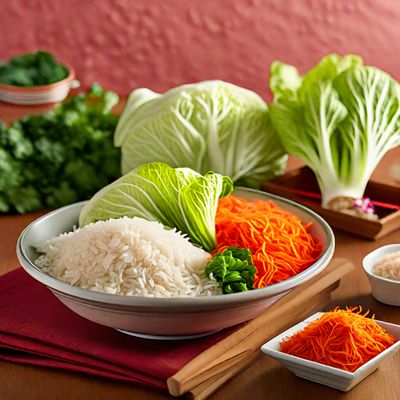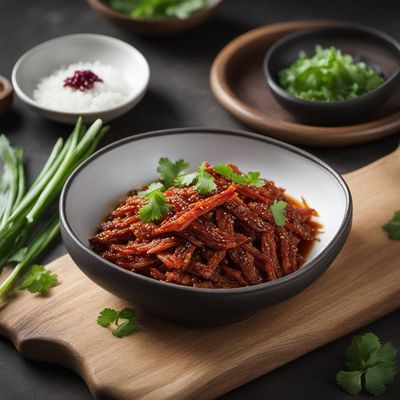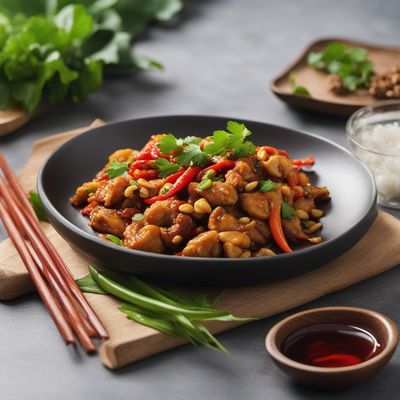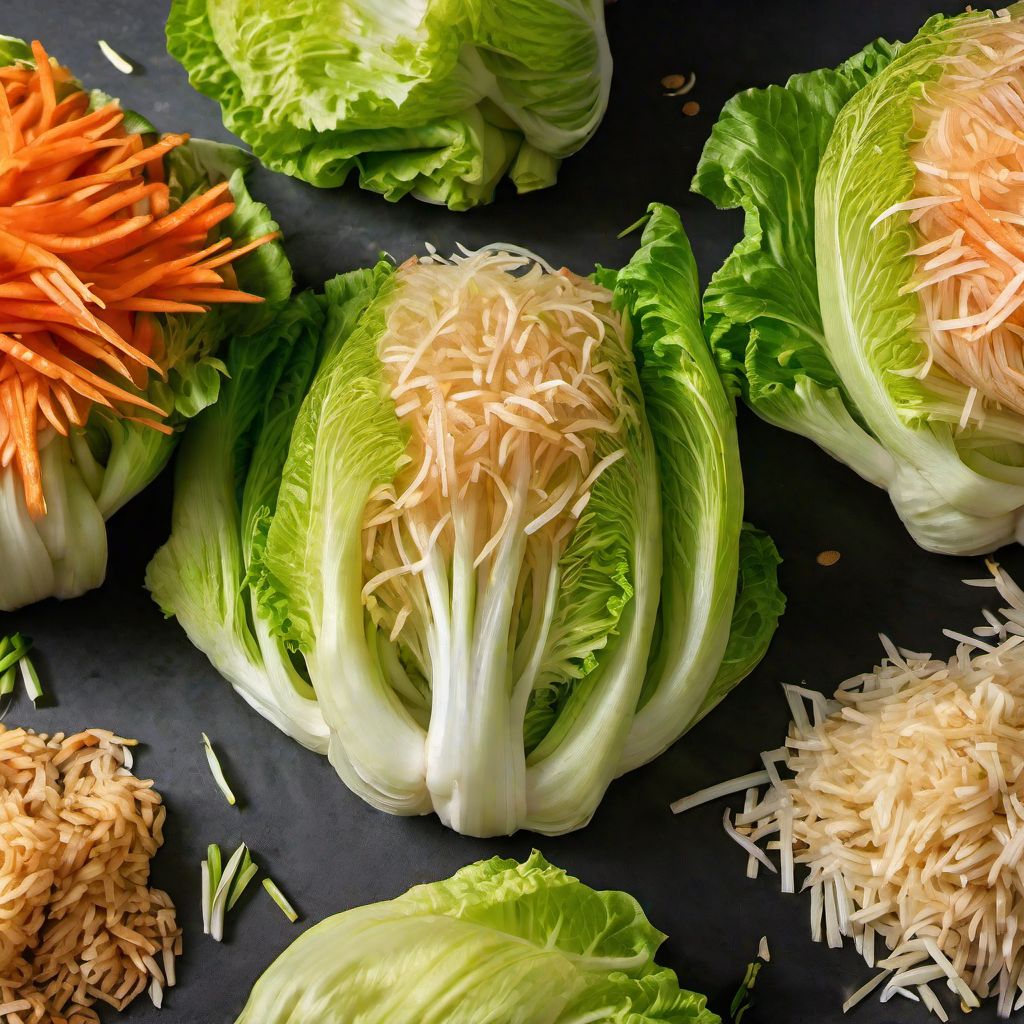
Recipe
Thai-style Kimchi
Spicy and Tangy Thai Kimchi: A Fusion of Flavors
4.8 out of 5
In Thai cuisine, bold flavors and vibrant spices are the essence of every dish. This Thai-style Kimchi recipe combines the traditional Korean fermented cabbage with Thai ingredients, creating a harmonious fusion of flavors. The result is a spicy and tangy condiment that will add a delightful kick to any Thai meal.
Metadata
Preparation time
20 minutes
Cooking time
0 minutes (fermentation time required)
Total time
1-2 days (including fermentation and refrigeration time)
Yields
4 servings
Preparation difficulty
Easy
Suitable for
Vegetarian, Pescatarian, Gluten-free, Dairy-free, Low calorie
Allergens
Fish (fish sauce)
Not suitable for
Vegan, Paleo, Nut-free, Soy-free, Egg-free
Ingredients
While the original Korean Kimchi is known for its pungent and garlicky flavors, Thai-style Kimchi incorporates Thai ingredients to give it a unique twist. Thai chilies, lemongrass, and fish sauce are added to enhance the spiciness and tanginess of the dish, creating a flavor profile that is distinctly Thai. We alse have the original recipe for Kimchi, so you can check it out.
-
1 medium Napa cabbage, shredded (about 8 cups / 1.9 liters) 1 medium Napa cabbage, shredded (about 8 cups / 1.9 liters)
-
2 tablespoons sea salt 2 tablespoons sea salt
-
2 Thai chilies, finely chopped 2 Thai chilies, finely chopped
-
2 cloves garlic, minced 2 cloves garlic, minced
-
1 tablespoon grated ginger 1 tablespoon grated ginger
-
1 stalk lemongrass, finely chopped 1 stalk lemongrass, finely chopped
-
2 tablespoons fish sauce 2 tablespoons fish sauce
-
1 tablespoon sugar 1 tablespoon sugar
-
1 tablespoon rice vinegar 1 tablespoon rice vinegar
-
1 tablespoon vegetable oil 1 tablespoon vegetable oil
-
1 tablespoon sesame oil 1 tablespoon sesame oil
-
2 green onions, thinly sliced 2 green onions, thinly sliced
-
1 carrot, julienned 1 carrot, julienned
Nutrition
- Calories (kcal / KJ): 80 kcal / 335 KJ
- Fat: 4g / 1g saturated
- Carbohydrates: 10g / 5g sugars
- Protein: 2g
- Fiber: 3g
- Salt: 2g
Preparation
-
1.Place the shredded Napa cabbage in a large bowl and sprinkle with sea salt. Massage the cabbage gently for about 5 minutes to help release its juices. Let it sit for 30 minutes.
-
2.Rinse the cabbage thoroughly under cold water to remove excess salt. Squeeze out any excess water and transfer the cabbage to a clean bowl.
-
3.In a separate bowl, combine the Thai chilies, garlic, ginger, lemongrass, fish sauce, sugar, rice vinegar, vegetable oil, and sesame oil. Mix well to create the kimchi paste.
-
4.Pour the kimchi paste over the cabbage and mix until the cabbage is well coated.
-
5.Add the green onions and carrot to the cabbage mixture and toss to combine.
-
6.Transfer the kimchi to a clean, airtight jar or container. Press it down firmly to remove any air bubbles and ensure the cabbage is fully submerged in the liquid.
-
7.Leave the kimchi at room temperature for 1-2 days to allow it to ferment. Then, refrigerate for at least 1 week before consuming to develop its flavors.
Treat your ingredients with care...
- Napa cabbage — Make sure to massage the cabbage well with salt to help release its juices and ensure proper fermentation.
- Thai chilies — Adjust the amount according to your spice preference. Add more for extra heat or reduce for a milder flavor.
- Lemongrass — Use only the tender part of the stalk and finely chop it for better incorporation into the kimchi.
Tips & Tricks
- For a more intense flavor, allow the kimchi to ferment for a longer period of time.
- Serve Thai-style Kimchi as a side dish to complement Thai curries, stir-fries, or rice dishes.
- If you prefer a milder kimchi, reduce the amount of Thai chilies or remove the seeds before chopping.
- Store the kimchi in the refrigerator for up to 1 month to maintain its freshness.
- Experiment with adding other Thai ingredients such as Thai basil or kaffir lime leaves for additional flavor variations.
Serving advice
Serve Thai-style Kimchi chilled as a side dish alongside your favorite Thai dishes. It adds a refreshing and spicy element to the meal. Garnish with fresh cilantro or Thai basil for an extra burst of flavor.
Presentation advice
Transfer the Thai-style Kimchi to a small serving bowl or plate. Arrange it neatly and garnish with a sprinkle of sesame seeds or sliced Thai chilies for an attractive presentation. Serve alongside other Thai dishes to create a visually appealing and flavorful spread.
More recipes...
For Kimchi » Browse all
For Korean cuisine » Browse all
More Korean cuisine dishes » Browse all
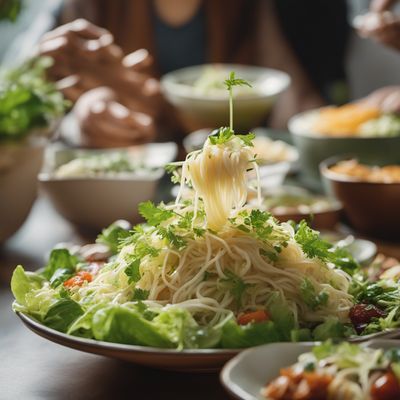
Makguksu
Makguksu Salad
Makguksu is a traditional Korean noodle dish that is perfect for a hearty meal. It is made with buckwheat noodles and a spicy sauce that is packed...
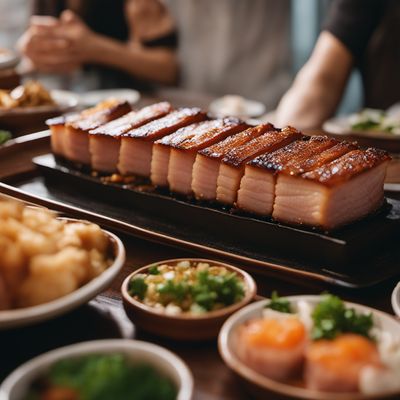
Ogyeopsal
Five-Layered Pork Belly
Ogyeopsal is a Korean dish made from pork belly. It is a popular dish in Korean cuisine and is often served as a main course.

Cadon niguk
Fish soup
Cadon niguk is a traditional soup from the Marshall Islands. The soup is made with coconut milk and is typically served with fish or chicken. It...
More Thai cuisine dishes » Browse all

Som tam mamuang
Green Papaya Salad
Som tam mamuang is a spicy Thai salad made with green papaya, peanuts, and dried shrimp. It is a refreshing and flavorful dish that is perfect for...

Khanom Tokyo
Khanom Tokyo is a popular Thai dessert that is made from rice flour and coconut milk. It is a sweet and creamy dessert that is perfect for any occasion.

Pad Thai
Pad Thai is a popular Thai dish that is made with stir-fried rice noodles, vegetables, and a variety of spices. The dish is typically served with...
